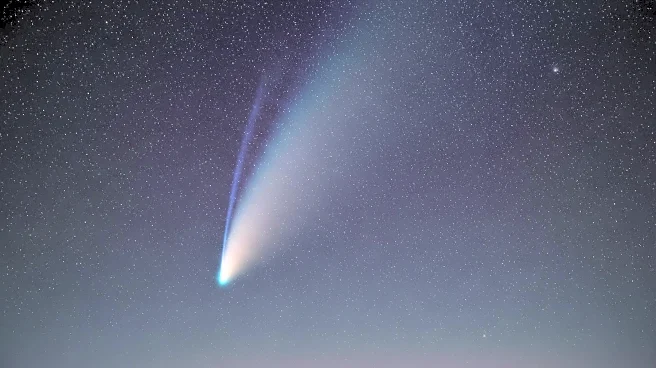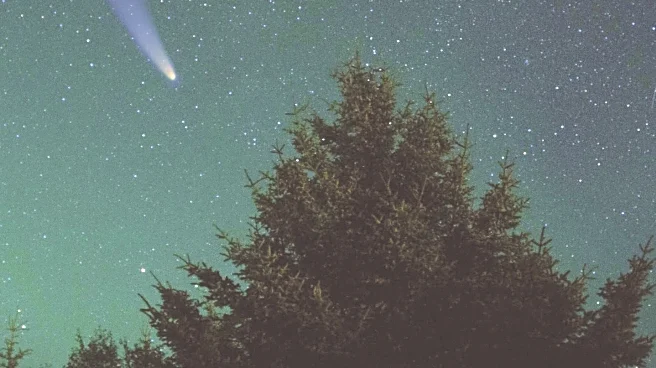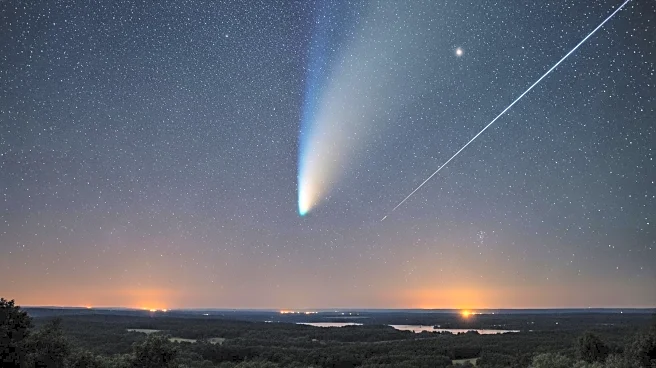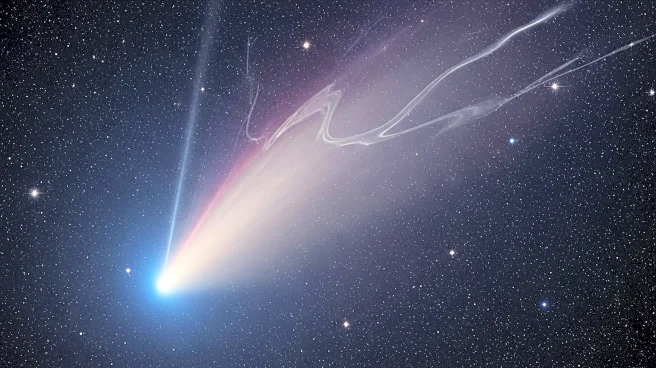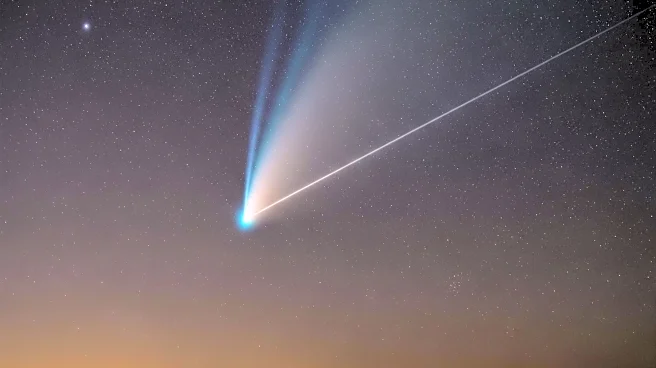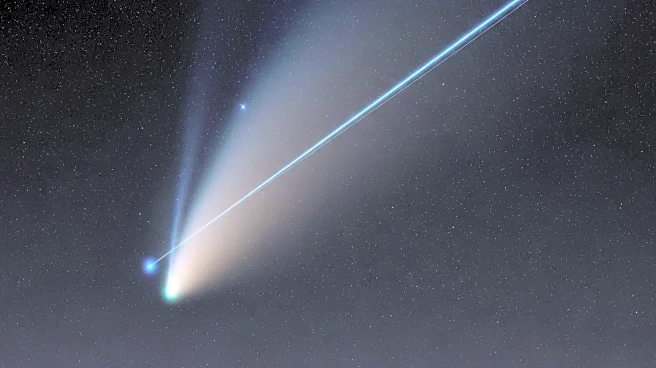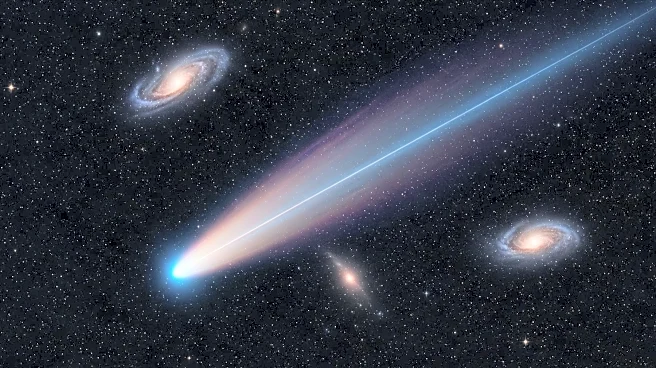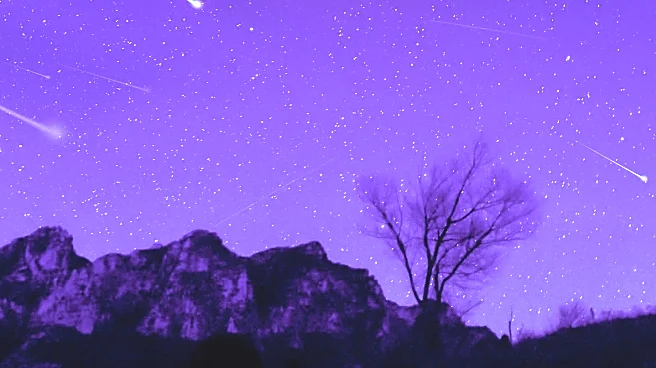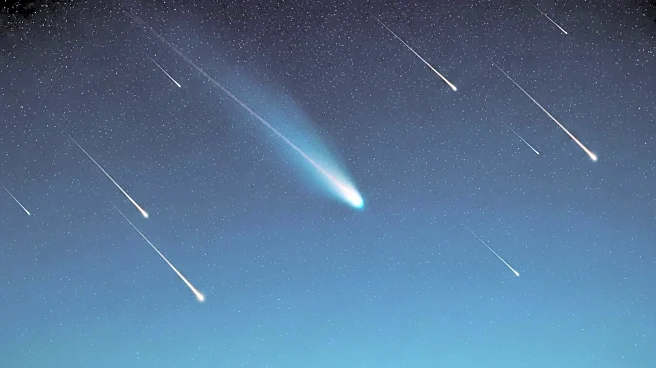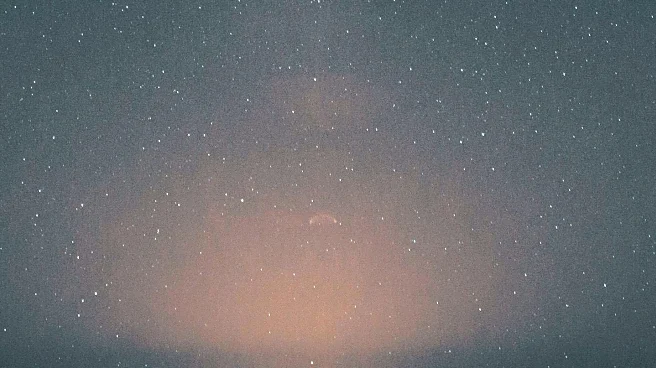What's Happening?
Two rare comets, C/2025 A6 (Lemmon) and C/2025 R2 (SWAN), are set to pass by Earth this October, providing a unique opportunity for skywatchers. Discovered in 2025, Lemmon was identified by the Mount Lemmon Survey
in Arizona, while SWAN was discovered by Ukrainian amateur astronomer Vladimir Bezugly. These comets will be visible as green gaseous globes with streaming tails, with SWAN expected to shine brightest around October 20 and Lemmon on October 21. The comets will not return for hundreds of years, making this a once-in-a-lifetime event for observers.
Why It's Important?
The passage of these comets offers a rare chance for astronomers and enthusiasts to observe celestial phenomena that occur infrequently. Such events can inspire interest in astronomy and provide valuable data for scientific study. Observing these comets can help researchers understand more about their composition, trajectory, and the conditions of the solar system. The visibility of these comets also highlights the importance of ongoing astronomical surveys and the contributions of amateur astronomers in discovering new celestial objects.
What's Next?
Skywatchers are encouraged to take advantage of this opportunity by observing the comets from areas with minimal light pollution. The use of binoculars or telescopes can enhance the viewing experience, and smartphone apps can assist in locating the comets in the night sky. As the comets approach their peak visibility, astronomers may conduct further studies to analyze their properties and behavior, contributing to the broader understanding of cometary science.
Beyond the Headlines
The discovery and observation of comets like Lemmon and SWAN underscore the collaborative nature of astronomy, where both professional and amateur astronomers play crucial roles. These events can foster public interest in space exploration and science, encouraging educational initiatives and community engagement in astronomical activities.
